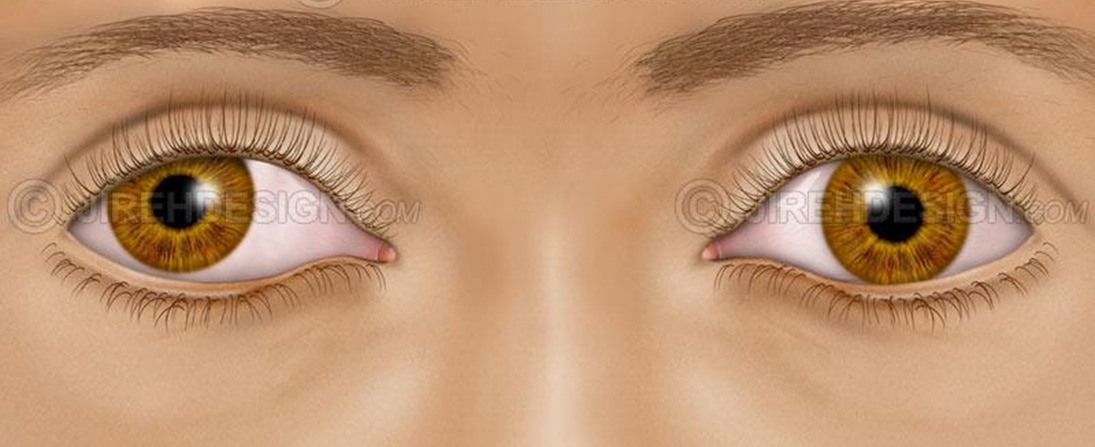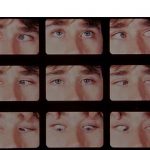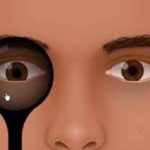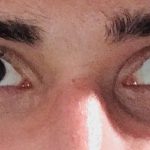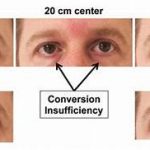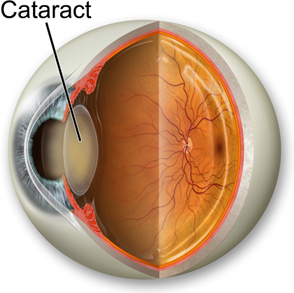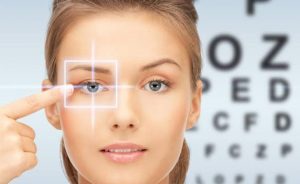Exophoria is a condition in which your eyes drift outward out of your control. It usually appears for a short time while you’re doing certain types of tasks. It’s not a serious condition and can be corrected with the right treatment.
Definition of EXOPHORIA
In this condition, the non-fixating eye becomes divergent on dissociation, I e. when fusion is interrupted. However, under the condition of bifoveal single vision, the deviation is corrected by the fusional convergence. Exophoria is the commonest variety of heterophoria. It constitutes about 60% of all cases of heterophoria for distance and about 80% of all cases of heterophoria for near.
Your two eyes each see at slightly different angles. Your brain automatically blends the images from each eye to create a single image instead of double vision. With exophoria, one of your eyes drifts so far out of coordination with the other that your brain can’t blend the two images.
Types
Exophoria may be the following types:
- Convergence weakness type: Exophoria is greater on near fixation than on distance fixation. In this condition, symptoms primarily occur during close work. Such patients frequently complain that during reading letters run together. The blurring is due to accommodation and occurs when fusional convergence becomes insufficient to cope with the deviation, e.g. during prolonged close work.
- Divergence excess type: Exophoria is greater on distance fixation than on near fixation. In such patients, asthenopic symptoms occur during activities connected with distant vision.
- Non-specific type: This type of Exophoria does not vary significantly in degree for any distance.
Symptoms of Exophoria
Exophoria symptoms usually first appear early in life, from elementary to high school. It tends to happen while you’re looking at things close to your eyes, like reading, writing, or using a computer. It’s also likely to happen while you cover one of your eyes.
Symptoms can include:
- Sore eyes
- Trouble reading
- Double vision
- Irritability
- Underperformance in sports
- Squinting or closing one eye in bright light
- Tiredness
- Trouble focusing in school
- Headache
These symptoms can also be signs of other vision conditions. Many of these types of eye or vision conditions are closely related and have very similar symptoms.
Causes:
The underlying cause of exophoria isn’t clearly known. However, the primary issue of exophoria is a weakness in the eye muscles.
This muscle weakness causes difficulty in what is called eye-teaming, or the ability to get the eyes to work together. This generally happens in childhood.
Management:
Treatment for exophoria can vary based on the severity of the symptoms. Some of the treatment options for exophoria may include the following:
Corrective lenses: These may or may not include the use of prisms.
Eye exercises: One such exercise is the pencil pushup.
To perform pencil pushups:
- Hold a pencil in front of your face and focus on one of the words on its side.
- As you maintain that focus, move the pencil closer to your eyes, aiming for the bridge of your nose.
- Continue moving it closer until the word blurs or you start getting double vision.
- Repeat this sequence as many times as recommended by your eye doctor.
Surgery is not usually needed or recommended to correct exophoria.
Complications and associated conditions:
There are several conditions that are similar to or may include, exophoria.
The following are some of these associated conditions:
- Convergence insufficiency
- Strabismus
- Exotropia
- Eye-tracking
- Eye-teaming
Complications include difficulty with reading and reading comprehension. However, the main complications occur when the condition is not diagnosed.
A child with undiagnosed exophoria may be diagnosed with other conditions including:
- ADHD
- Learning disabilities
- Short attention span issues
- Dyslexia
Children with undiagnosed exophoria may also be perceived as not trying in school or when reading.
These are just some of the conditions that may be looked at in someone with exophoria. If any of these issues exist, it’s important that you have a qualified eye professional rule out exophoria first.
Outlook
Once properly diagnosed, exophoria can be treated and corrected. It usually takes several months of regular treatment or exercises to correct exophoria.
Most treatments are done at home, so it’s important that you do your exercises regularly as prescribed by your doctor.
Exophoria has been known to reoccur if your eyes become strained or if you have an illness. In the case of reoccurrence, treatments will again correct the condition.
Relation of near exophoria to distance exophoria
The basic deviation in exophoria is measured while the patient fixates a distant target using his/her full optical correction and near exophoria is measured, when the patient fixates a target at 33 cm. The patient’s AC/A ratio influences the magnitude of near phoria (X¹) in relation to distance phoria (X) as depicted in the below picture.

Exophoria vs. exotropia
Exophoria and exotropia are closely related. However, they aren’t in the same condition.
Exophoria is when one eye drifts outward during uneven visual stimulation or when viewing objects up close. It’s most common when only one eye is covered. In such cases, the covered eye is the one that will drift outward.
Exotropia is a condition in which the eyes drift outward and away from each other during times of equal visual stimulation. It tends to occur regularly.
Exotropia is a form of strabismus. Strabismus is when there’s a deviation of the eyes that you cannot control.
Both exophoria and exotropia are conditions that cause the eyes to drift outward. Both conditions may also be referred to as convergence insufficiency if they occur when you’re using your eyes to see nearby objects.

